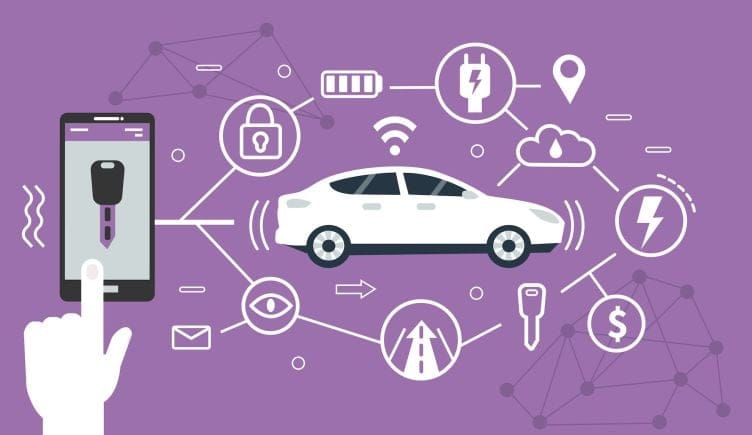As cars become increasingly connected to the Internet and other devices through the Internet of Things (IoT), many companies are investing in implementing this technology. IoT can bring a wide range of benefits to cars, from improved performance and convenience to greater safety and security.
However, several challenges must be addressed before these benefits can be realized. This article will explore the potential advantages and disadvantages of using IoT for connected cars, as well as strategies for effectively managing its implementation.
The Benefits of Implementing IoT in Connected Cars
IoT technology has revolutionized the way we travel in our connected cars. By integrating internet-connected devices and systems into automobiles, drivers can enjoy a range of advantages that make their driving experience more enjoyable, efficient, and safe. Here are some of the key benefits that come with installing IoT in your vehicle:
- Improved Safety: The most important benefit is improved safety on the roads. With sensory technology integrated into car systems, connected cars can detect potential hazards more quickly than ever before and alert drivers to take action to avoid danger or reduce its impact if it occurs. Additionally, they can also be programmed to automatically perform tasks such as slowing down when approaching sharp corners or stopping at stop signs – further reducing risks on the road.
- Enhanced Convenience: Installing IoT technology provides enhanced convenience for drivers as well by allowing them to access entertainment services like music streaming or navigation directly from their vehicles with just a few taps on their smartphones or voice commands through digital assistants like Siri and Alexa. This gives them complete control over how they want to enjoy their journey without having to fumble around for physical controls inside the car’s cabin while driving!
- Increased Efficiency: Connected cars also offer increased efficiency when it comes to fuel consumption because they use data collected from sensors installed throughout the car’s bodywork which continuously monitor engine performance levels and adjust accordingly based on terrain type, driver behavior, etc., resulting in optimum utilization of fuel resources even during long journeys across remote areas where petrol stations may not always be available nearby!
1. Increased Automation and Efficiency

Source: ltin.com
The implementation of the Internet of Things (IoT) in connected cars has opened up a new realm of possibilities when it comes to increased automation and efficiency. Through the use of sensors, machine learning algorithms, and real-time communication technologies, these vehicles can recognize their environment and react accordingly. This makes them more efficient since they can bypass roadblocks or traffic jams that would otherwise delay the vehicle’s arrival times.
Connected cars are also capable of providing data such as location information, speed limits, braking patterns, fuel consumption rates, etc, which helps drivers make informed decisions while driving. Automation within connected cars further increases efficiency by performing mundane tasks like automatically turning off headlights or closing windows when the car is parked – thus saving energy and time for both driver and passengers alike!
Additionally, IoT technology provides enhanced safety features such as automatic accident notification systems that alert emergency services should an incident occur on the roads – something which could potentially save countless lives every year.
2. Enhanced Safety Features
Connected cars are designed to offer enhanced safety features for drivers, passengers, and pedestrians alike. By incorporating IoT technology into connected car design, owners can benefit from a greater sense of security. Through the use of real-time data analysis, connected cars alert drivers when they enter unsafe driving conditions or risk colliding with other vehicles on the road.
Additionally, vehicle sensors can detect nearby dangers such as potholes or large animals crossing the street and warn the driver accordingly. With sophisticated algorithms that process data in milliseconds and actuate responses quickly, connected cars reduce human error while improving overall safety on the roads.
The Challenges of Implementing IoT in Connected Cars

Source: .einfochips.com
The implementation of the Internet of Things (IoT) in connected cars is a complex process. While it offers plenty of advantages, there are also some challenges to consider. For example, connecting multiple devices requires extensive development and testing work as well as robust security systems.
Additionally, incorporating new technologies into existing infrastructures can be costly and difficult to manage on an ongoing basis. Furthermore, integrating IoT components with other systems such as navigation or entertainment features may require additional resources and expertise. Lastly, network latency issues can arise if the car’s wireless connection is unreliable or inconsistent due to poor cell coverage in certain areas. All these factors make implementing IoT in connected cars a challenging endeavor that requires careful planning and preparation to ensure its success.
1. Security Concerns
The security of connected cars is an important concern. With the implementation of IoT in connected vehicles, a variety of new attack vectors become available to malicious actors. As such, manufacturers must take steps to ensure that their automobiles are secure and protected from external threats. This includes implementing encryption technologies, firewalls, authentication systems, and software updates with the latest security patches.
Additionally, manufacturers should consider using artificial intelligence algorithms that can detect suspicious or unusual behavior on their automotive networks to prevent unauthorized access or data theft. Finally, car owners must be educated about how they can protect their data while driving connected cars by changing passwords regularly and avoiding connecting unknown devices to the vehicle’s network.
2. Complexity of Integration

Source: catalyst.nejm.org
The complexity of integration for implementing IoT into connected cars is immense. It requires a deep understanding of both the hardware and software that goes into making modern vehicles function properly. The interconnectedness between systems and components creates an even greater challenge, as any change to one system can lead to unexpected consequences in another.
While some components are relatively simple to integrate, others require more complex engineering solutions to maintain the desired levels of performance and security. At the same time, automakers must also consider emerging technologies such as 5G cellular connectivity when integrating IoT solutions into their vehicles – something which can add yet another layer of complexity. Ultimately, successfully achieving a seamless integration process is essential for connected car manufacturers to benefit from all that IoT has to offer.



